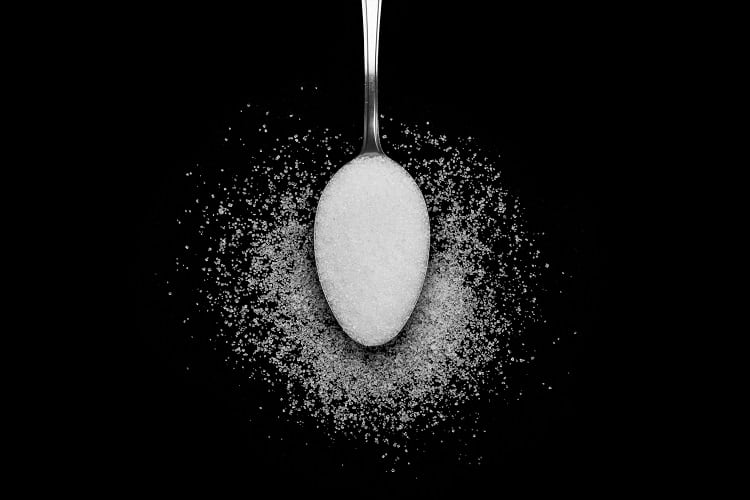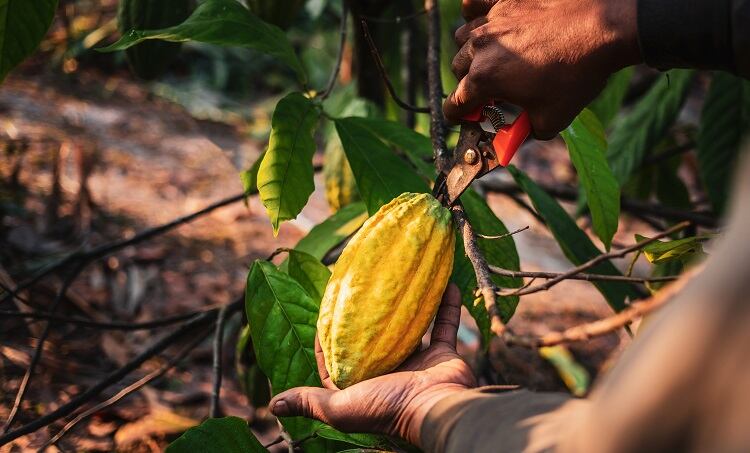Ingredient and raw materials major ofi (Olam Food Ingredients), which supplies cocoa, coffee, dairy, nuts and spices to the food industry has announced new coffee sustainability targets for the next six years and cutting carbon emissions is top of the agenda. Launched as part of their coffee Livelihoods, Empowerment, and Nature at Scale campaign (LENS), it is the result of extensive research into the impact coffee production has on the environment, as well as the impact the environment has upon coffee production.
“Our targets are ambitious, but they’re backed by a sustainability journey spanning 20 years and represent the next chapter in our long-term ambition to build more resilient and regenerative coffee supply chains,” explains coffee chief executive for ofi, Vivek Verma.
How is ofi cutting carbon emissions from coffee production?
In collaboration with Google geo-spatial partner, NGIS, ofi has created a Carbon Sequestration Monitoring (CSM) tool, which measures and accounts for gains and losses in carbon stocks on ofi’s coffee suppliers’ farms and sourcing landscapes. This will allow ofi to monitor exactly how much carbon is being produced in the manufacturing of its coffee. This system will also be applied to its cashew and cocoa production.
This new digital tool will work in addition to ofi’s existing monitoring framework, identifying exactly where changes need to be made.
"We know from the Digital Footprint Calculator on our sustainability management system AtSource, that on-farm GHG emissions – Scope 3 – are by far the biggest part of our footprint," Sara Mason, Head of Coffee Sustainability Engagement at ofi, told FoodNavigator. "To reduce these emissions we work closely with farmers to incentivise and implement climate-smart measures, and our Carbon Scenario Planner (CSP) built into AtSource allows us to model the most cost-effective way. The CSP is a key activation tool to support the decarbonization projects ongoing in our coffee (as well as cocoa supply chains, and on our pepper estates in Brazil and Vietnam.) For example, for one of our global coffee customers that we supply with beans from Guatemala – the tool has enabled us to model a 32% carbon reduction scenario"
ofi has created a three-step plan to cut its emissions and ensure the 2030 deadline is met:
- Enable farmers to become 'stewards of the environment' by increasing their household incomes through promoting crop diversification, as well as other income opportunities such as beekeeping
- Promote regenerative practices through improved crop rotation, composting, mulching, recycling crop-residues, integrated soil fertility management and integrated pest management, helping farmers to regenerate their soils and ecosystems
- Reduce emissions by sequestering carbon in soils and trees through regenerative agriculture, agroforestry, and reforestation initiatives; reducing post-harvest loss from improper processing, and drying and storage
Why is cutting carbon emissions in food production essential for tackling climate change?
What are food miles?
Food miles are the distance travelled by food items from production to consumption, indicating the environmental impact. Food miles are calculated by multiplying the distance travelled by each ingredient, by the carbon intensity of the mode of transport (air, road or rail).
The environmental impact of food production is significant, accounting for a quarter of all greenhouse gas emissions globally. This figure includes every aspect of production, from farm to fork. However, there is one aspect of the process, which has a bigger impact than the rest: transportation.
Transportation is the largest single contributing factor to supply chain emissions in the food industry, with the European Commission estimating that global food miles accounts for nearly 20% of production emissions. Cutting these emissions would therefore have a substantial impact on reducing the environmental damage caused by the food industry.
However, tackling transport emissions should not be the only focus for food producers. There are multiple other aspects to be considered and addressed in order to effectively reduce the carbon footprint of the food industry.
What is the difference between food loss and food waste?
Food loss and food waste both refer to food that is not eaten.
Food loss occurs before food reaches the consumer. Food can be lost as a result of problems during the production, storage, processing and distribution phases.
Food waste refers to food that is fit for consumption but consciously discarded by a restaurant or from the home.
21% of food production emissions originates from crop production for direct human consumption and 6% originates from the production of animal feed. This is a result of elements such as the release of nitrous oxide from fertilisers and manure and agricultural machinery.
Additionally, food waste and loss is a major contributing factor to food industry emissions, with an estimated 30% of all food produced globally wasted and lost each year. This loss occurs at every stage of the food supply chain, from farms to restaurants and household kitchens. Not only is this hugely damaging to the environment through land waste (1.4 billion hectares annually) in the production of the uneaten food, water waste (250 km³) in the production of the uneaten food and emissions from landfill in the disposal of the uneaten food, but it is also unacceptable in a time when an estimated 828 million people (10% of the global population) do not have enough to eat, according to World Vision figures.
Targeting this wastage and loss could have a significant impact in lowering food-industry emissions. Durable packaging and consumption of foods, such as fruits and vegetables, which are currently deemed ‘imperfect’ by supermarkets, could help significantly.
How is climate change affecting coffee production?
Climate change has been identified as a major threat to the production of coffee, with growers warning that rising temperatures and unpredictable rainfall, are altering conditions under which coffee plants are grown. This is leading to decreased yields and increased vulnerability to pests and disease.





